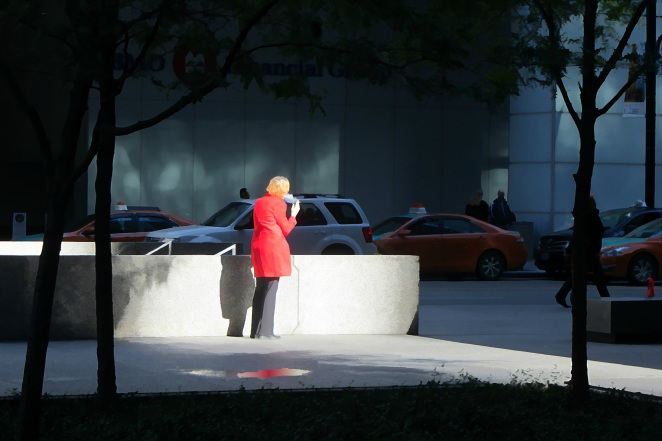The juxtaposition and balance of opposites –organic vs geometric or manufactured, asymmetry vs symmetry light vs dark, order and chaos, urban vs natural, glossy newness vs patinas of the old interest me. Paintings more overtly depict our inner landscapes. In photography it is more difficult however certain techniques such as reflections in glass, common in the city, often work well – depicting 2 worlds – the object and a reflection of a word beyond.

How do you set up a shot?
My best photos are often the result of chance encounters rather than consciously composing, although as a visual artist I have analyzed composition from a classical perspective extensively. For me the city is an elaborate set and this environment actually does most of the “work” in setting up a shot. I delight in the surprise of finding new subjects, which I see everywhere – the urban environment is rich in novel shapes, and it is constantly changing, perhaps reflecting our own evolution. I almost always carry a camera with me, even a pocket-size one, and return with my DSLR. I will move around the subject getting many shots from different angles until I am satisfied with the composition and lighting. Images captured in the early morning light, or during the night often render a subject in a unique, almost theatrical way.

What makes a good photograph?
To me the primary ingredients of a good photograph are composition and subject matter. I strive to represent familiar scenes and subjects saturate them with suggestion in an unfamiliar not-easily-identifiable ways. My photos question the validity of conventional structural aspects we often take for granted.
If the subject matter and composition of a photo attracts me sufficiently, I work to understand composition, light, shadow, colour and reflection. I will change anything that makes the image more compelling to express its ultimately divine nature. For example hard edges in juxtaposition to diffuse or softer ones, use of complementary colours. I use symmetry for a sense of unease, asymmetry for harmony. I am disinclined toward extraneous detail but love dense values. I might even remove elements that make it identifiable either as a photograph or a painting, adding to the aura of ultimate mystery of the everyday, and yet remain convincingly real.
Here are a few more, both from the natural world and the Urban environment.









